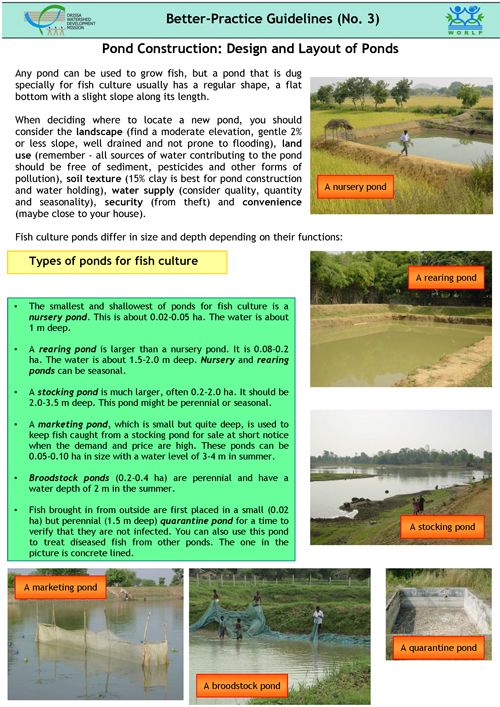Pond construction: Design and layout of ponds
30 November 2005 | 7608 Downloads | .pdf | 990.65 KB | Better management practices, India, Inland aquaculture
Any pond can be used to grow fish, but a pond that is dug specially for fish culture usually has a regular shape, a flat bottom with a slight slope along its length. When deciding where to locate a new pond, you should consider the landscape (find a moderate elevation, gentle 2% or less slope, well drained and not prone to flooding), land use (remember - all sources of water contributing to the pond should be free of sediment, pesticides and other forms of pollution), soil texture (15% clay is best for pond construction and water holding), water supply (consider quality, quantity and seasonality), security (from theft) and convenience (maybe close to your house).
Creative Commons Attribution.

